A marginal junior American hick Baptist in dark times
Mar 9th, 2006 | By Randall White | Category: Heritage Now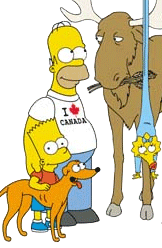 In a recent Globe and Mail piece Roy MacSkimming reviewed a new biography called Marginal Man: The Dark Vision of Harold Innis, by Alexander John Watson. He concluded with: “This is surely one of the important books of the year.” The prediction applies only to Canada. And even here you have to wonder if it can possibly come true. But it will probably be a good sign for Harold Innis’s home and native land if it does.
In a recent Globe and Mail piece Roy MacSkimming reviewed a new biography called Marginal Man: The Dark Vision of Harold Innis, by Alexander John Watson. He concluded with: “This is surely one of the important books of the year.” The prediction applies only to Canada. And even here you have to wonder if it can possibly come true. But it will probably be a good sign for Harold Innis’s home and native land if it does.
Innis was the first Canadian-born head of the economics department at the University of Toronto, from the late 1930s to the early 1950s. Like John Kenneth Galbraith, he grew up in the early 20th century family-farm democracy of southwestern Ontario. He can be briefly pinned down as the older J.K. Galbraith who stayed at home. And here he inspired his younger and more hip U of T colleague Marshall McLuhan (who once used the term “hick Baptist” to summarize Innis’s essential persona in the flesh).
An anonymous reviewer in the Times Literary Supplement in the United Kingdom also once joked that Innis was “Canada’s first and perhaps only genuine intellectual.” The Canadian mainstream has never been too warm towards this minority, visible and invisible alike (and especially in anglophone Canada?). Yet in the wake of the fractured federal elections of 2004 and now 2006, Homer Simpson’s “America Junior” could stand some kind of advice from indigenous genuine intellectuals. And it may be that Harold Adams Innis (1894-1952) has now been dead long enough to fill at least part of the bill.
The First Harold Innis: Poet of The Fur Trade in Canada
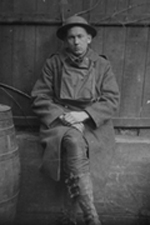 Among the somewhat cultist students of this nowadays obscure Canadian heritage moment, it has long been customary to distinguish between two Harold Innises. They broadly correspond to the rising young economics professor (and wounded First World War veteran) of the 1920s and 1930s, and the distinguished Canadian and “international” academic entrepreneur of the 1940s and 1950s. (Shortly before his death in 1952, Innis’s professional career was capped by his election as the first Canadian-born president of the American Economic Association. Galbraith would become the second person of this sort to hold the distinction, 20 years later.)
Among the somewhat cultist students of this nowadays obscure Canadian heritage moment, it has long been customary to distinguish between two Harold Innises. They broadly correspond to the rising young economics professor (and wounded First World War veteran) of the 1920s and 1930s, and the distinguished Canadian and “international” academic entrepreneur of the 1940s and 1950s. (Shortly before his death in 1952, Innis’s professional career was capped by his election as the first Canadian-born president of the American Economic Association. Galbraith would become the second person of this sort to hold the distinction, 20 years later.)
These two Innises had rather different main focal points. As Roy MacSkimming notes in his Globe and Mail review, Watson’s new book “argues persuasively that Innis’s [later] preoccupations were consistent with his earlier obsessions.” In various ways this has long been recognized too. But in trying to very quickly summarize what Innis was all about it still helps to distinguish between the early and later incarnations.
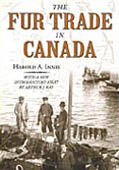 In the first incarnation Innis was an inspired and meticulous student of the history of modern North American economic development, with special reference to Canada. His early masterpiece was a book called The Fur Trade in Canada: An Introduction to Canadian Economic History – first published by Yale University Press in 1930.
In the first incarnation Innis was an inspired and meticulous student of the history of modern North American economic development, with special reference to Canada. His early masterpiece was a book called The Fur Trade in Canada: An Introduction to Canadian Economic History – first published by Yale University Press in 1930.
Insofar as modern Canada has any kind of romantic founding legend, it probably is the remarkable canoe-bound expansion of the multiracial “Indian-European” fur trade in the 16th, 17th, 18th, and earlier 19th centuries – in the unique east-west, lakes-and-rivers geography of northern North America. This exotic, in some ways improbable, but finally altogether true story is what first brought the present Canadian territory into the modern world economy. And down to today Harold Adams Innis remains the great poet who has told the story best.
His literary style was rough-hewn. (He had done his graduate work at the mid-western University of Chicago, colleagues who had done theirs at US eastern seaboard universities and in Europe used to point out.) But he combined awesomely detailed documentary and statistical research with recurrent passages of illuminating broad generalization in a powerful way. The near-mythical Montreal-headquartered fur-trading enterprise of the North West Company, e.g., which had expanded to the Pacific Ocean by the early 19th century, was “the forerunner” of the modern Canadian “confederation and it was built on the work of the French voyageur, the contributions of the Indian, especially the canoe, Indian corn, and pemmican, and the organizing ability of Anglo-American merchants.”
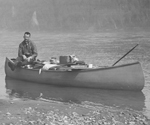 In the still underdeveloped universe of genuine intellectual debate in his home and native land, Innis has sometimes been mistakenly proposed as a kind of theorist of a centralizing and traditionally “nationalist” vision of the 1867 Canadian confederation, associated early on with the Conservative prime minister, John A. Macdonald, and then much later with the Liberal prime minister, Pierre E. Trudeau. And, whatever else, Trudeau the athlete certainly paddled a great many more actual miles of what his friend Eric Morse called the Fur Trade Canoe Routes of Canada/Then and Now than Harold Innis ever did, despite his reputation for field work, based largely on one long trip to the very far north in 1924.
In the still underdeveloped universe of genuine intellectual debate in his home and native land, Innis has sometimes been mistakenly proposed as a kind of theorist of a centralizing and traditionally “nationalist” vision of the 1867 Canadian confederation, associated early on with the Conservative prime minister, John A. Macdonald, and then much later with the Liberal prime minister, Pierre E. Trudeau. And, whatever else, Trudeau the athlete certainly paddled a great many more actual miles of what his friend Eric Morse called the Fur Trade Canoe Routes of Canada/Then and Now than Harold Innis ever did, despite his reputation for field work, based largely on one long trip to the very far north in 1924.
In fact Innis conceived Canadian development in broader North American and even global contexts. His writings on the subject are acutely sensitive to recurrent patterns of regionalism and decentralization, and a wide variety of north-south “continental” as well as east-west “national” (and “international”) entanglements – from the early days of the northern fur trade down to the much more complex Canadian resource and industrial economy of the era just after the Second World War. Innis’s Canadian essays of the late 1930s and early 1940s especially (“Economic Trends in Canadian-American Relations,” e.g., “Recent Developments in the Canadian Economy,” or “Decentralization and Democracy”) remain surprisingly relevant to Canada’s particular political and economic circumstances in the early 21st century.
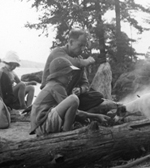 Down to the end of his life (he unfortunately died early of prostate cancer in his late 50s), Harold Innis in his first incarnation was also something that remains all too rare even today – a Canadian social critic who was refreshingly critical of Canada itself. He believed that Canada could and ought to be more than it was, and he was prepared to say so out loud, even if it intermittently tarnished his strangely successful local academic career. He had a wry and angular sense of humour – combining the folkways of the rigorously Baptist family farm on which he grew up with his adult life as a cigarette-smoking Toronto urbanite, who recurrently traveled across Canada, the United States, and various parts of Europe on academic, public service, and related business. Such printed public addresses and consulting-work pieces as “The Church in Canada,” “Adult Education and Universities,” “Democracy and the Free City,” and “Great Britain, the United States and Canada” remain surprisingly relevant to Canada’s particular circumstances in the early 21st century too.
Down to the end of his life (he unfortunately died early of prostate cancer in his late 50s), Harold Innis in his first incarnation was also something that remains all too rare even today – a Canadian social critic who was refreshingly critical of Canada itself. He believed that Canada could and ought to be more than it was, and he was prepared to say so out loud, even if it intermittently tarnished his strangely successful local academic career. He had a wry and angular sense of humour – combining the folkways of the rigorously Baptist family farm on which he grew up with his adult life as a cigarette-smoking Toronto urbanite, who recurrently traveled across Canada, the United States, and various parts of Europe on academic, public service, and related business. Such printed public addresses and consulting-work pieces as “The Church in Canada,” “Adult Education and Universities,” “Democracy and the Free City,” and “Great Britain, the United States and Canada” remain surprisingly relevant to Canada’s particular circumstances in the early 21st century too.
The Second Harold Innis: Prophet of Empire and Communications
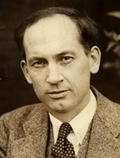 The first Harold Innis is still sometimes said to be the inventor of the so-called “staples theory” of the growth of the modern Canadian resource economy. He (and others whose work he encouraged, sometimes with grants from the Carnegie Endowment in the United States, and then from the earliest beginnings of Canada’s own federal-government-funded academic research support system) followed up his path-breaking research on the first northern resource economy of the fur trade with parallel studies of its later successors – in the forest industries, mining, the cod fisheries, the wheat economy, and so forth. (Oil and gas – the most glittering jewel of the Canadian resource economy today – had just begun to come on stream during Innis’s last years.)
The first Harold Innis is still sometimes said to be the inventor of the so-called “staples theory” of the growth of the modern Canadian resource economy. He (and others whose work he encouraged, sometimes with grants from the Carnegie Endowment in the United States, and then from the earliest beginnings of Canada’s own federal-government-funded academic research support system) followed up his path-breaking research on the first northern resource economy of the fur trade with parallel studies of its later successors – in the forest industries, mining, the cod fisheries, the wheat economy, and so forth. (Oil and gas – the most glittering jewel of the Canadian resource economy today – had just begun to come on stream during Innis’s last years.)
In the early 1940s Innis himself became intrigued by the newsprint sector of the forest industries. This was finally about how the news was communicated. And it logically enough led to his second incarnation, as a rough-hewn pioneering theorist of the role of changing communications technologies in the rise and fall of global empires.
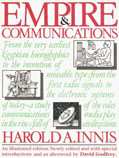 One further part of the background here was that the Canada of the early 1940s was still a quite conscious part of the old global civilization of the British Empire. Another was that during the Second World War the United States started to take over the leadership of this particular empire from the United Kingdom – in a kind of second fit of the original “absence of mind” with which the United Kingdom had acquired the enterprise in the first place. And Canada of course lived right next door to the United States.
One further part of the background here was that the Canada of the early 1940s was still a quite conscious part of the old global civilization of the British Empire. Another was that during the Second World War the United States started to take over the leadership of this particular empire from the United Kingdom – in a kind of second fit of the original “absence of mind” with which the United Kingdom had acquired the enterprise in the first place. And Canada of course lived right next door to the United States.
The later Innis’s theorizing on his new subject did not draw on or refer directly to contemporary examples. With his congenital instinct to get at the earliest roots of things (as in the case of the fur trade which began the Canadian resource economy), he turned to the role of communications technologies in the most ancient known empires of the Middle East and Europe. His one premature and quite unfinished attempt to write about his later enthusiasms systematically was in a book called Empire and Communications, first published in 1950 by Oxford University Press. And this book has a half-dozen main parts, respectively entitled: “Egypt”; “Babylonia” (in approximately present-day Iraq); “The Oral Tradition and Greek Civilization”; “The Written Tradition and the Roman Empire”; “Parchment and Paper”; and “Paper and the Printing Press.”
 This was the Harold Innis who inspired Marshall McLuhan. The later Innis was preoccupied by the thought that different kinds of communications media have different kinds of centralizing and decentralizing impacts on imperial (or “global”) political and economic projects (and on the management of any other large human organization, for that matter). From here it was only a short distance to McLuhan the literary critic’s oracular pronouncement that “the medium is the message” – and to much else in McLuhan’s almost experimental writing and talking of the 1950s, 1960s, and 1970s (including his appearance in a Woody Allen movie, and his encounters with the San Francisco advertising guru, Howard Luck Gossage).
This was the Harold Innis who inspired Marshall McLuhan. The later Innis was preoccupied by the thought that different kinds of communications media have different kinds of centralizing and decentralizing impacts on imperial (or “global”) political and economic projects (and on the management of any other large human organization, for that matter). From here it was only a short distance to McLuhan the literary critic’s oracular pronouncement that “the medium is the message” – and to much else in McLuhan’s almost experimental writing and talking of the 1950s, 1960s, and 1970s (including his appearance in a Woody Allen movie, and his encounters with the San Francisco advertising guru, Howard Luck Gossage).
Innis the economic historian’s own more restrained (and subtly complex) version of McLuhan’s signature theme is suggested in the title of a collection of his later public addresses and other occasional essays called The Bias of Communication, first published by the University of Toronto Press in 1951. During the late 1940s and early 1950s as well, in public addresses and occasional essays collected elsewhere after his death (see the Note on Reading below), Innis also alluded not all that subtly to the policy implications of his ivory-tower research on empire and communications for the big picture of current political and economic events, in a way that McLuhan would never stoop (or dare?) to touch.
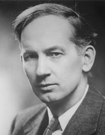 Innis finally ended his life as, among other things, a “dark” critic of the kind of US foreign policy that crystallized in the wake of the Second World War – which he saw as driven by a new “American imperialism,” that “has been made plausible and attractive in part by the insistence that it is not imperialistic.” His later essay “Great Britain, the United States and Canada” – originally given as a lecture at the University of Nottingham in the United Kingdom, in the spring of 1948 – is one key text here. And it concludes with an eight-page critique of the emerging US foreign policy of the Cold War era that probably does retain some striking relevance for the troubled global village of the early 21st century. (Though it would take the literary talents of Marshall McLuhan to actually invent the term “global village” in the 1960s.)
Innis finally ended his life as, among other things, a “dark” critic of the kind of US foreign policy that crystallized in the wake of the Second World War – which he saw as driven by a new “American imperialism,” that “has been made plausible and attractive in part by the insistence that it is not imperialistic.” His later essay “Great Britain, the United States and Canada” – originally given as a lecture at the University of Nottingham in the United Kingdom, in the spring of 1948 – is one key text here. And it concludes with an eight-page critique of the emerging US foreign policy of the Cold War era that probably does retain some striking relevance for the troubled global village of the early 21st century. (Though it would take the literary talents of Marshall McLuhan to actually invent the term “global village” in the 1960s.)
It may be a bit of a McLuhanist stretch to say, as Roy MacSkimming does in his review of John Watson’s new book on Marginal Man: The Dark Vision of Harold Innis, that “Innis effectively predicted the Iraq disaster as well as the ‘war on terror’,” which consume so much international attention nowadays. But, as MacSkimming and Watson note, some of the later Innis’s sentences on some same broad subject certainly do still ring today. As in, e.g.: “The United States has been described by John Gunther as the greatest, craziest, most dangerous, least stable, most spectacular, least grown up and most powerful and magnificent nation ever known.’ Her attitude reminds one of the fanatic fear of mice shown by elephants.”
Can the Marginal Man and the Dark Vision Really Live On in the 21st Century?
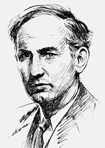 Just as Innis has sometimes been mistakenly proposed as a kind of theorist of a centralizing and traditionally “nationalist” vision of the 1867 Canadian confederation, he has also sometimes been mistakenly portrayed as an aggressively “European” Canadian, who was ultimately hostile to what his historian colleague Frank Underhill called “American civilization” (and not just US foreign policy after the Second World War). As some European students of Innis’s later communications writing have stressed, he was actually a quite unique creation of the North America of his day, in both Canada and the United States – and about as far away from a real European as you can get. (Which is no doubt part of what Marshall McLuhan meant too, when he called Innis a “hick Baptist.”)
Just as Innis has sometimes been mistakenly proposed as a kind of theorist of a centralizing and traditionally “nationalist” vision of the 1867 Canadian confederation, he has also sometimes been mistakenly portrayed as an aggressively “European” Canadian, who was ultimately hostile to what his historian colleague Frank Underhill called “American civilization” (and not just US foreign policy after the Second World War). As some European students of Innis’s later communications writing have stressed, he was actually a quite unique creation of the North America of his day, in both Canada and the United States – and about as far away from a real European as you can get. (Which is no doubt part of what Marshall McLuhan meant too, when he called Innis a “hick Baptist.”)
The very small world of Canadian higher learning in the early 20th century still had strong institutional (and personnel) connections to the United Kingdom and the British Empire. But Harold Innis’s (by all accounts) very pretty wife, Mary Quayle, who played a major role in his adult life, was from Wilmette, Illinois. He met her while doing his graduate work at the University of Chicago. And the US academic connections he began to develop in Chicago would continue to grow after he took a job at the University of Toronto in 1920.
He published articles in US academic journals. His first big book on the fur trade was published by Yale University Press in the United States. His later eminence as an early Canadian-born academic entrepreneur in Canada had a lot to do with the role he managed to acquire as a Canadian distributor of financial largesse from the Carnegie Endowment in the United States. The professional peak of his career came when he was elected president of the American Economic Association – and not any analogue in Britain or France.
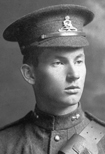 If he were still alive today (as John Kenneth Galbraith so remarkably is), Innis would almost certainly be counted among the domestic multilateralist-global-village critics of present-day US foreign policy – in the blue states of the more perfect union. He would probably admire former US Secretary of Defense Robert McNamara’s recent compelling movie on The Fog of War – and perhaps even enjoy watching Jon Stewart and Stephen Colbert on US TV. (Though he would also no doubt be saddened by the career of Prime Minister Tony Blair, who has quite aggressively disappointed Innis’s late 1940s “hope that Great Britain will escape American imperialism as successfully as she herself has escaped British imperialism.”)
If he were still alive today (as John Kenneth Galbraith so remarkably is), Innis would almost certainly be counted among the domestic multilateralist-global-village critics of present-day US foreign policy – in the blue states of the more perfect union. He would probably admire former US Secretary of Defense Robert McNamara’s recent compelling movie on The Fog of War – and perhaps even enjoy watching Jon Stewart and Stephen Colbert on US TV. (Though he would also no doubt be saddened by the career of Prime Minister Tony Blair, who has quite aggressively disappointed Innis’s late 1940s “hope that Great Britain will escape American imperialism as successfully as she herself has escaped British imperialism.”)
At the same time, Innis was not just uniquely North American. He was a uniquely Canadian North American as well. To have the kind of career he really wanted and deserved, some would say, and have said, he ought to have moved to the United States (as the younger Galbraith did, e.g.). And, as it happened, he did receive recurrent US offers of academic employment as his career at the University of Toronto blossomed. But he always finally chose to remain in Canada.
Part of this no doubt was just that his original academic specialization was what is now called Canadian economic history. Another part was that by the time his best US opportunities opened up, he had already achieved an unusual position of influence in an emerging new universe of Canadian social science research – that he was finally loath to abandon. Another part again no doubt was that Harold Innis for inexplicable reasons just liked at least the idea of what modern Canada might become in the future (almost as much as he liked the rather strange and exotic historical romance of its earliest multiracial fur-trade beginnings).
 As Roy MacSkimming explains in his review of Alexander John Watson’s new book, however, Innis in his later or second incarnation also came to feel that marginal places like Canada actually had some strategic advantages in contemplating the wider problems of the emerging new global village. Innis believed, in MacSkimming’s words, that the “creative ideas needed” to cope with a host of fresh challenges for the human species “would arise from the margins of empire, where minds were still open, free of the bias of imperial paradigms.” Canada was one of these margins, full of the history of the old European empires of France and Britain, and right next door to the latest and most up-to-date neo-imperial project in the USA – “made plausible and attractive in part by the insistence that it is not imperialistic.”
As Roy MacSkimming explains in his review of Alexander John Watson’s new book, however, Innis in his later or second incarnation also came to feel that marginal places like Canada actually had some strategic advantages in contemplating the wider problems of the emerging new global village. Innis believed, in MacSkimming’s words, that the “creative ideas needed” to cope with a host of fresh challenges for the human species “would arise from the margins of empire, where minds were still open, free of the bias of imperial paradigms.” Canada was one of these margins, full of the history of the old European empires of France and Britain, and right next door to the latest and most up-to-date neo-imperial project in the USA – “made plausible and attractive in part by the insistence that it is not imperialistic.”
Part of the reason Harold Innis is as little known as he is today, even in Canada, is that not many of those who have come after him have shared his ultimate belief in the marginal man’s (or woman’s of course) strategic position in our particular ongoing dark times. Or, as the British historian Eric Hobsbawm explained in the 1980s: “Unlike the USA, or both Britain and France, Canada remains culturally provincial, though interesting things and people occasionally emerge from it.” (The same could no doubt be said for such other former British self-governing dominions as Australia, New Zealand, or South Africa. And how can people from such obscure places finally have anything of real consequence to say about the problems of the global village?)
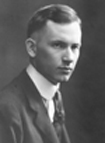 John Watson (who has also had a bureaucratic career as president of CARE Canada) has been studying and pondering the career of Harold Innis for a good many years now. Some time ago, he gave a paper at a modest Saturday colloquium on Innis held by University College at the University of Toronto. At this point even Watson himself did not believe in Innis’s theory that the “creative ideas needed” to cope with a host of fresh challenges for the human species “would arise from the margins of empire, where minds were still open, free of the bias of imperial paradigms.” The trouble with Innis, Watson suggested then, was that his first incarnation as the poet of the Canadian resource economy made sense. But he did not have the right background or equipment for his failed second career as a prophet of empire and communications in the global village.
John Watson (who has also had a bureaucratic career as president of CARE Canada) has been studying and pondering the career of Harold Innis for a good many years now. Some time ago, he gave a paper at a modest Saturday colloquium on Innis held by University College at the University of Toronto. At this point even Watson himself did not believe in Innis’s theory that the “creative ideas needed” to cope with a host of fresh challenges for the human species “would arise from the margins of empire, where minds were still open, free of the bias of imperial paradigms.” The trouble with Innis, Watson suggested then, was that his first incarnation as the poet of the Canadian resource economy made sense. But he did not have the right background or equipment for his failed second career as a prophet of empire and communications in the global village.
Between then and now Watson has apparently changed his mind. And the book he has finally written on his long-meditated subject, Marginal Man: The Dark Vision of Harold Innis, must also partly be the story of how the author discovered some kind of new faith in the current plausibility of the marginal man’s second incarnation. The half-hopeful big question which still lingers is whether Roy MacSkimming’s enthusiasm for Watson’s new book means that Canada itself has finally started to change. Has it, in the midst of all its current and still only dimly self-acknowledged agonies and fractured democratic parliaments, actually started to become the kind of place Harold Innis wanted it to be? Are all the margins of empire in the global village today no longer quite as parochial as they used to be? For Canadians it would of course be very encouraging to think that this might be even just somewhat true. We will have to wait and see whether Watson’s Marginal Man finally does become, as still somewhat guardedly predicted, “surely one of the important books of the year” – only in Canada at least.
A Note on Reading Innis Today
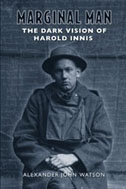 Marginal Man: The Dark Vision of Harold Innis, by Alexander John Watson, is published by the University of Toronto Press. The stubborn facts that it weighs in at 525 pages (up from 480 in the publisher’s promotional material) and has a $65 (Canadian) price tag may bear adversely on its popularity, if not necessarily its status as an important book of 2006.
Marginal Man: The Dark Vision of Harold Innis, by Alexander John Watson, is published by the University of Toronto Press. The stubborn facts that it weighs in at 525 pages (up from 480 in the publisher’s promotional material) and has a $65 (Canadian) price tag may bear adversely on its popularity, if not necessarily its status as an important book of 2006.
One ultimate objective would be to read some of what Innis wrote himself as well. Those who have already done this sometimes hesitate to recommend that their friends follow. Innis is always a bit difficult to read, and only rarely offers compensating deep literary pleasure. What the American political scientist Karl W. Deutsch once said about The Bias of Communication applies to most of Innis’s other writing too: “Dr. Innis gives his reader not so much a neat exposition of finished work as an experience of being in the presence of an ongoing process of thought – of thought characterized by depth, vitality, and power.”
It would be useful if there were a popular reader that introduced a broader audience to someone’s idea of the best and most accessible of Innis’s writing, but so far there is not. The Fur Trade in Canada, however, remains in print. It is probably the most successful of Innis’s books, strictly as a book, and it does have recurrent near-poetic stretches of excellent historical writing. There is as well a recent enough academic reader of Innis’s essays and selected key passages from his books, edited by Daniel Drache, and published under the title Staples, Markets, and Cultural Change. And The Bias of Communication remains in print too.
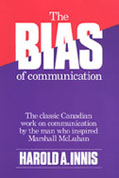 Innis is still a figure of some international academic interest, in various current literatures of what might be broadly called communications studies. He remains a figure of obvious interest in various Canadian studies literatures. And there are vaguely more populist quasi-academic Innis cults, especially in Canada. Despite his continuing wider obscurity, any full bibliography of writing by and about Harold Innis would now be suitably vast. And the genre continues to grow.
Innis is still a figure of some international academic interest, in various current literatures of what might be broadly called communications studies. He remains a figure of obvious interest in various Canadian studies literatures. And there are vaguely more populist quasi-academic Innis cults, especially in Canada. Despite his continuing wider obscurity, any full bibliography of writing by and about Harold Innis would now be suitably vast. And the genre continues to grow.
Yet an ordinary well-informed Canadian lay person who took on recurrent browsing in just the four books noted so far, as a patriotic spring-and-summer-2006 reading project, would be doing more than enough for the home and native land. (And this compact browsing list – Watson’s new Marginal Man biography, along with The Fur Trade in Canada, The Bias of Communication, and Professor Drache’s reader, Staples, Markets, and Cultural Change – may be especially suited to days of mindless leisure at the cottage, or on camping or canoe trips?)
Innis does not have any big practical solutions to anything. But all his writing is driven by what he called a “broad interest in the complex problems of society.” He has still probably thought about and studied the complex problems of Canadian society more deeply, and realistically, than anyone else, before or since his own day and in both official languages. And he has parallel thoughts on the complex problems of society in the wider global village that do still seem strangely relevant to the early 21st century era of “the Iraq disaster” and the “war on terror” (allowing of course for the plain fact that he has been dead for more than half a century now).
At least some will finally urge that, in the wake of the 2004 and 2006 Canadian federal elections, Harold Adams Innis still has some quite interesting things to say to ordinary well-informed Canadian voters about increasingly urgent complex problems of both Canadian and international society today, that have been brewing for quite a long time. And they are probably right.
Randall White is the author of a number of books, the most recent of which include Ontario Since 1985 , Is Canada Trapped in a Time Warp?: Political Symbols in the Age of the Internet, and (with the artist, Michael J. Seward) On the Road in the GTA: An eclectic guide to the exurban sprawl of Greater Toronto. The photographs and illustrations of Harold Innis used in this article come from the University of Toronto Archives, and are in the public domain.


[…] the rest at http://www.counterweights.ca/2006/03/hick/ […]